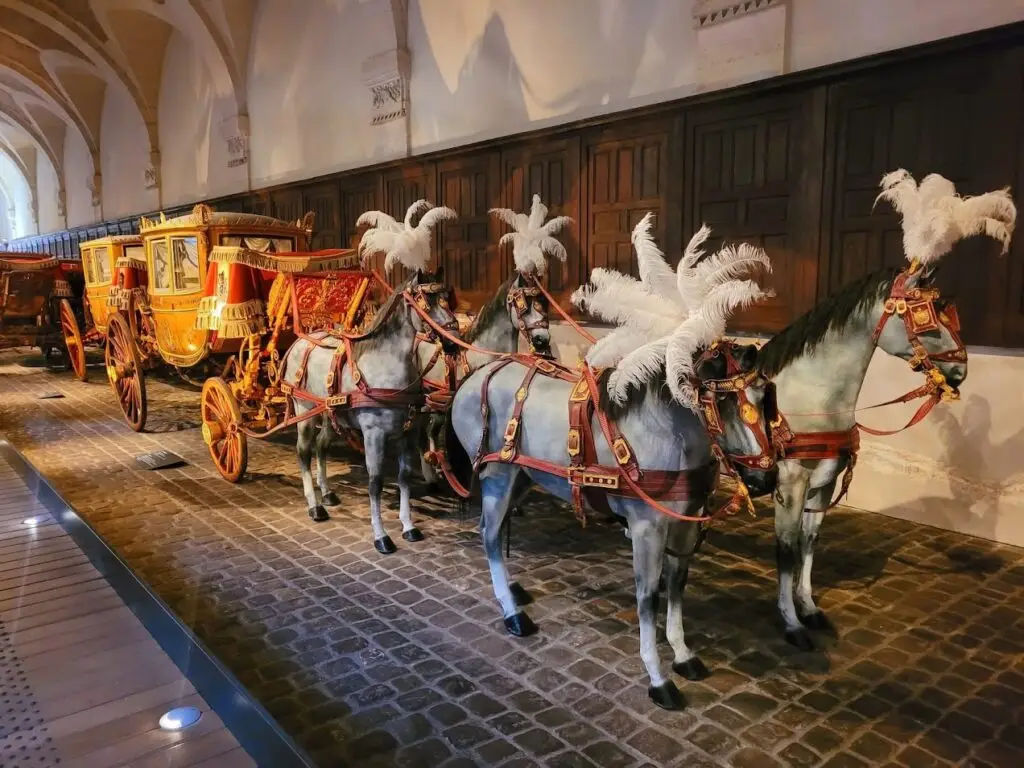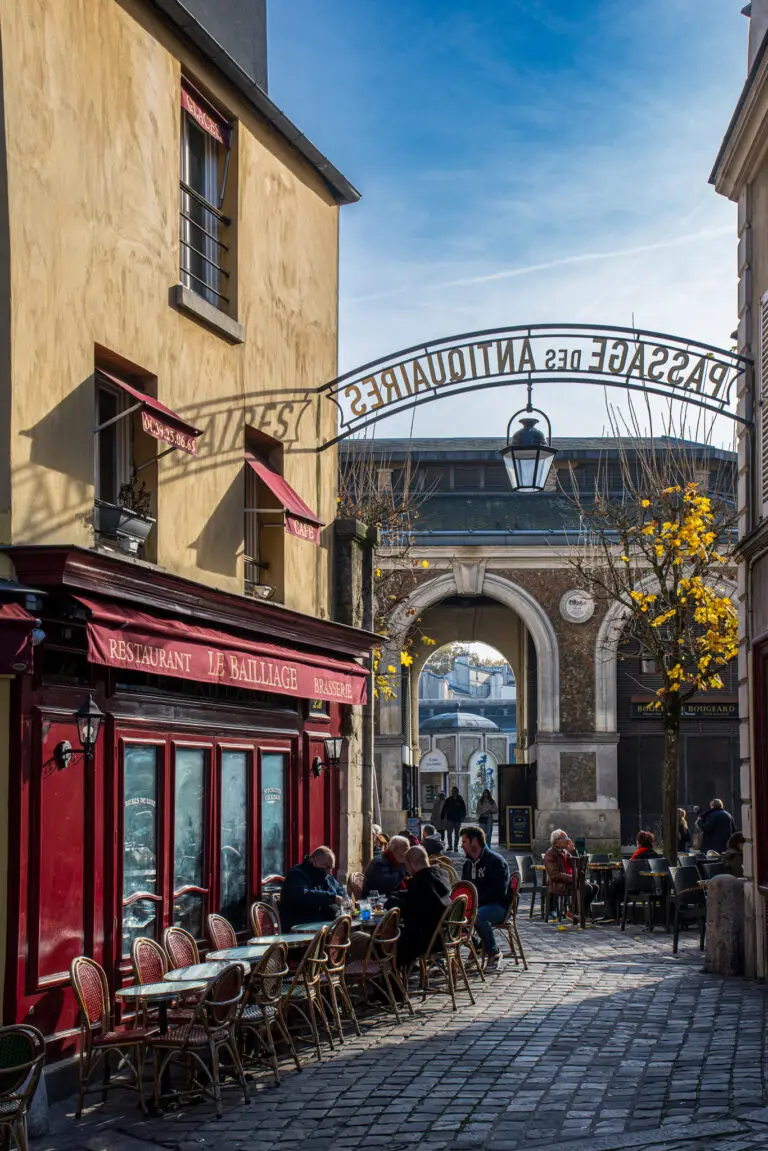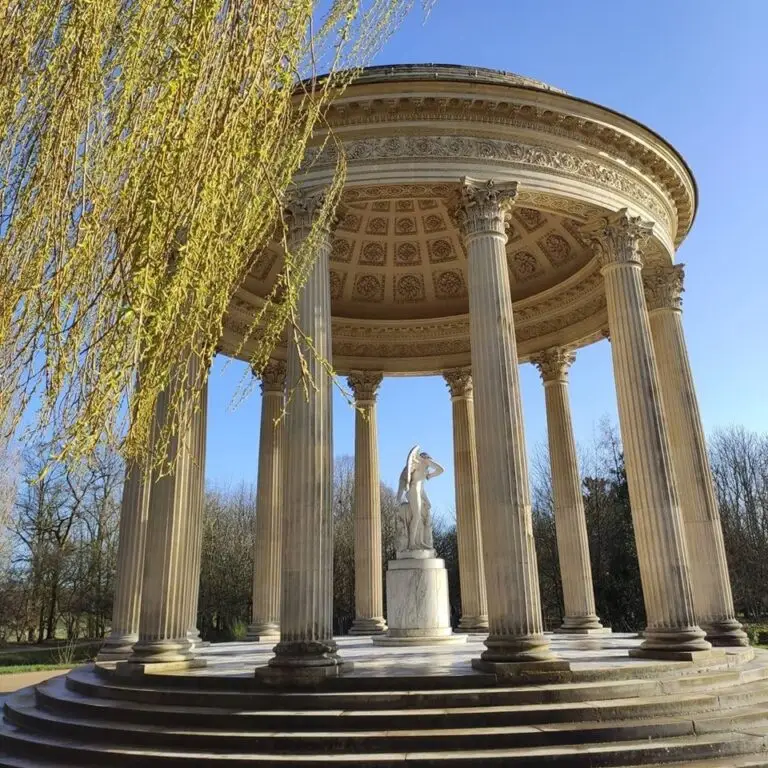The Coach Gallery of Versailles is a free museum inside the palace’s Great Stables, featuring royal carriages, Napoleon’s coronation coach, and rare ceremonial artifacts you won’t see in the main château. While most visitors flock to the Hall of Mirrors or the Queen’s Hamlet, this quiet corner of the palace tells its own vivid story—on wheels.
Quietly tucked away in the Grande Écurie (Great Stables), just across from the palace itself, lies one of Versailles’ most overlooked treasures: The Coach Gallery (La Galerie des Carrosses). You’ll most likely even walk by it on your way to the castle without even noticing.
This extraordinary museum is not only a showcase of royal opulence—it’s a time machine on wheels. The gilded, velvet-lined royal carriages of Versailles, along with ornate sedan chairs, imperial sleighs, and solemn funeral wagons, offer a rare and theatrical glimpse into the pageantry of French monarchy.
What You’ll See at the Coach Gallery at Versailles
The coach gallery of Versailles is one of the palace’s most remarkable hidden spaces—filled with golden royal carriages, coronation coaches, velvet-lined sleds, and theatrical vehicles that once carried kings to glory and to rest.
From imperial coronation coaches to whimsical sleds, the collection is a full parade of ceremonial grandeur. The Coach Gallery at Versailles houses:
- Royal state carriages used for coronations and public processions
- Ornately carved Napoleonic coaches including his famed coronation coach
- Royal funeral carriages draped in black velvet and crowned with golden angels
- Sedan chairs and children’s carriages, some nearly doll-like in scale
- Sleighs used by Louis XV’s daughters to race through the snowy gardens
Each piece is a study in theatrical design—less transportation, more stagecraft.
If you were looking for horses, you won’t find any in these stables anymore. Be sure to check out this article on horseback riding in Versailles.
Here’s the best part: The coach gallery of Versailles museum is completely free to visit. Always. (Well, whenever they’re open.)
No ticket, no palace pass, no timed entry nonsense. Just show up during opening hours (generally weekend afternoons, though schedules can vary—always check the Versailles website before you go) and step into one of the most evocative corners of the ancient estate.
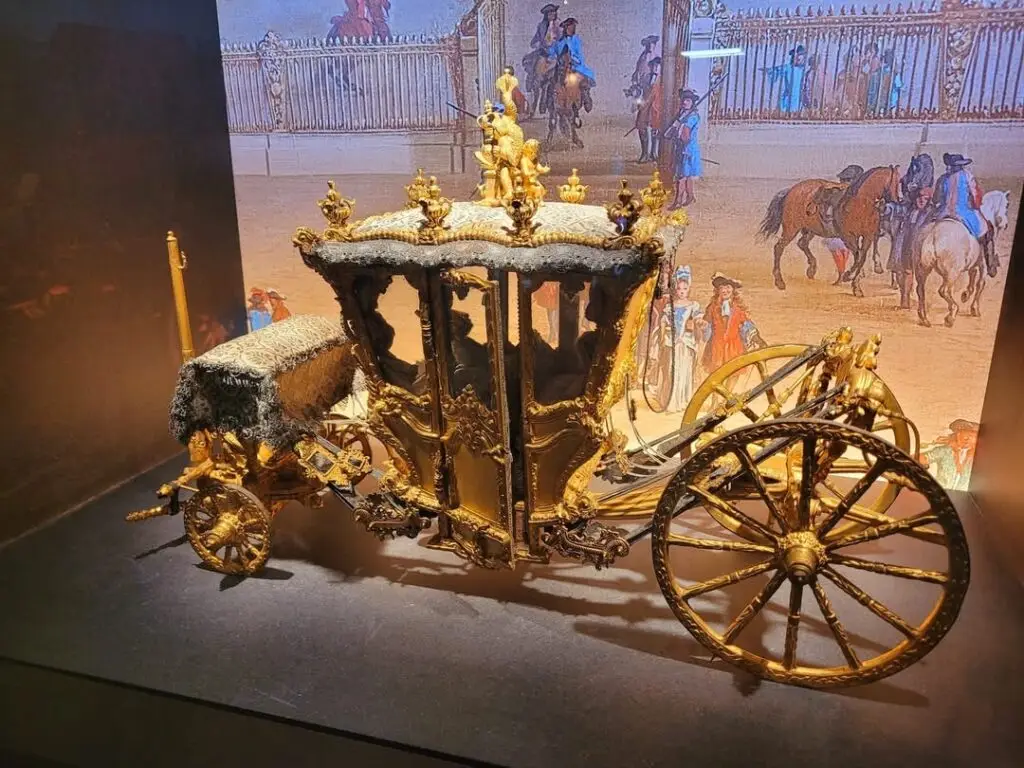
Royal Carriages, Gilded Stories
Each carriage in the coach gallery of Vesrailles isn’t just a means of transport—it’s a mobile stage set. These vehicles were less about getting from point A to B, and more about being seen en route. Some are theatrical, others poignant, either way they’re a narrative devises, or should we say rolling scripts from France’s past.
Here are a few of the standout pieces:
Napoleon’s Coronation Coach: A Moving Throne Room
One of the main highlights of the Coach Gallery at Versailles is Napoleon’s coronation coach. It’s quite the showstopper. Built for Napoleon I, it’s crowned with a gilded sculpture of Victory, classical muses blowing trumpets, and his unmistakable “N” monogram up top. N for Napoleon. Get it?
But the irony? Napoleon found these carriages absurdly impractical and super uncomfortable. I mean, wouldn’t you? There’s no shock absorption in this pre-hydraulics world. He reportedly loathed the slow, bumpy, creaky ride and often galloped ahead on horseback, leaving the golden monster to follow behind him empty.
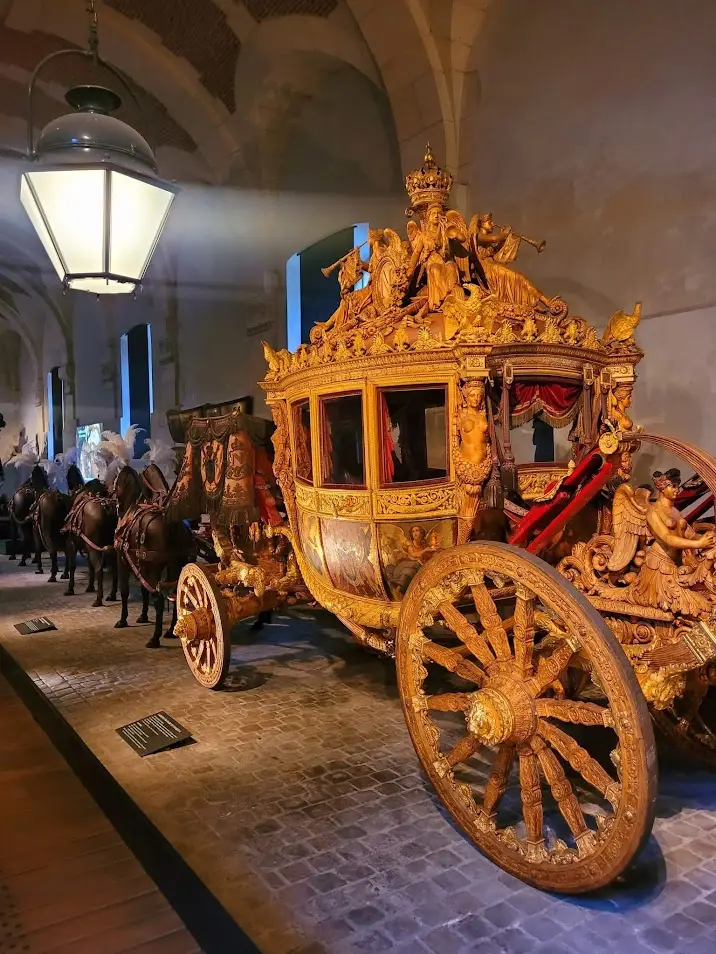
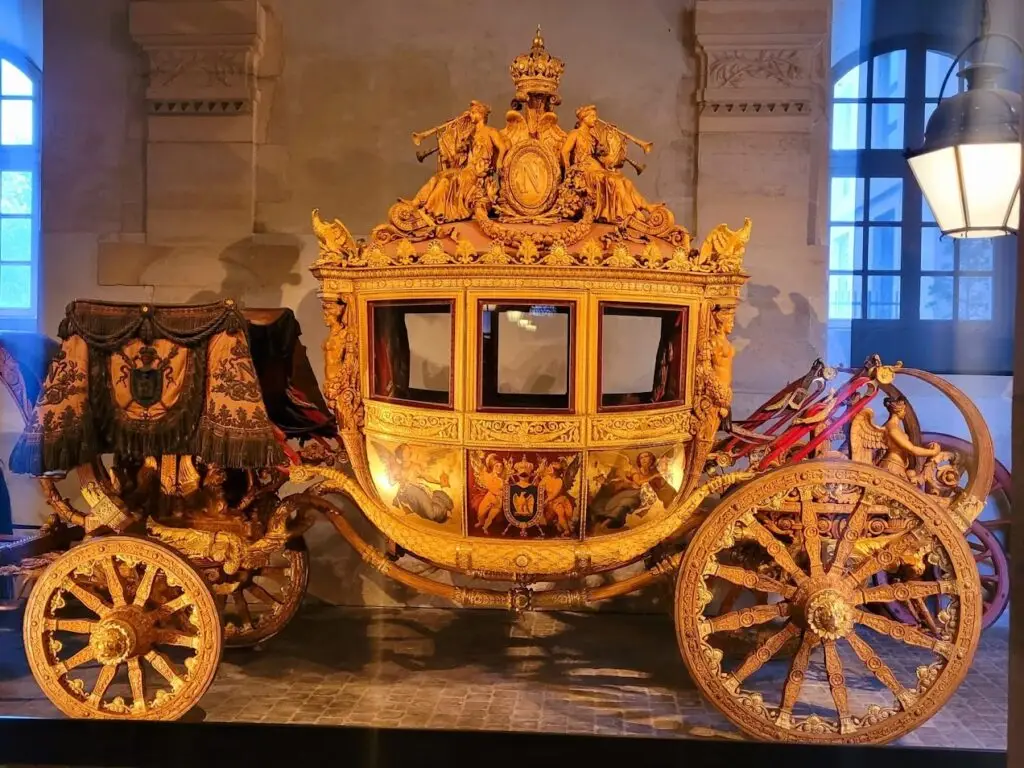
The Royal Funeral Coach: A Carriage for the End
Another striking piece is the royal funeral coach used in the ceremonies for Louis XVIII. It’s draped in black velvet, adorned with golden fleur-de-lis, and topped with tall black feather plumes rise from each corner, and angelic figures are carved into the corners—symbolic escorts for the departed king’s soul.
There’s a strange quietude to this one. It’s somber and magnificent, and like everything at Versailles, death was a real show-stopper. (
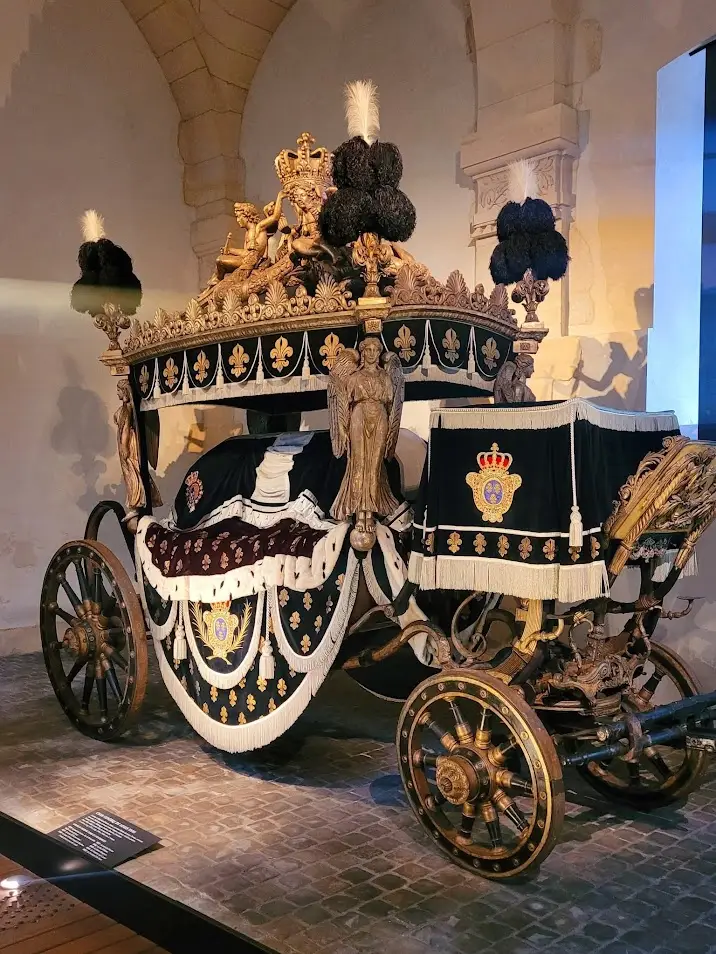
The Coach Gallery of Versailles’ Royal Sleds: The Coolest Kind of Fun
When the Versailles fountains froze over, the court didn’t huddle indoors—they brought out their sleighs. Some were shaped like roaring panthers or flying griffins. Others painted with mythological scenes straight out of a rococo fever dream.
The most whimsical of these belonged to Louis XV’s daughters, who raced one another through the snowy alleys of the garden. Picture powdered wigs, fur-lined cloaks, and a winter landscape that looked like a Boucher painting come to life.
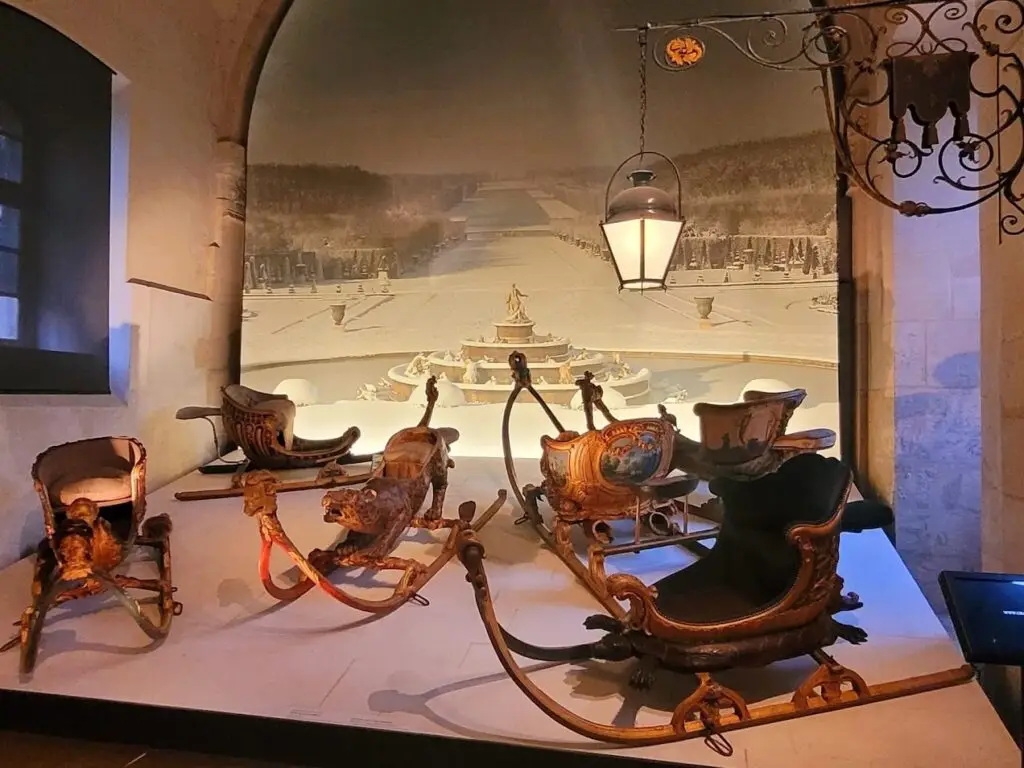
What to Expect When You Visit
Cost: Free. As in actually free. No catch.
Location: Grande Écurie (Great Stables), just opposite the main palace gates.
Opening hours: Typically open on weekend afternoons and public holidays. But do yourself a favor and confirm on the official Palace of Versailles website before you go.
Tips for Visitors:
- It’s quiet, uncrowded, and refreshingly un-touristy.
- If you’re visiting the main palace, add this to your itinerary after lunch. It’s a 5-minute walk.
- Families love it—kids are fascinated by the life-sized horse models and ornate carriages.
- Yes, photography is allowed.
Why You Shouldn’t Skip It
Versailles is a world built on symbols: power, illusion, movement, and spectacle. If you don’t know the word, baroque, you should look it up now. The Coach Gallery captures all of that—on wheels. It’s where royalty was made visible, where emperors staged grandeur without words, and where even grief came draped in velvet and gold braid.
What you see here are not just carriages, but chapters of monarchy in motion. From the coronation of a self-made emperor to the final ride of a Bourbon king, every detail is a whisper from the past. And unlike so much of Versailles, it’s offered to you without a line, without a ticket, and without a crowd.
It’s also a reminder: Versailles is more than a palace. It’s an ecosystem of theatrical spaces. And this one just might be the most cinematic of them all.
